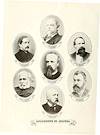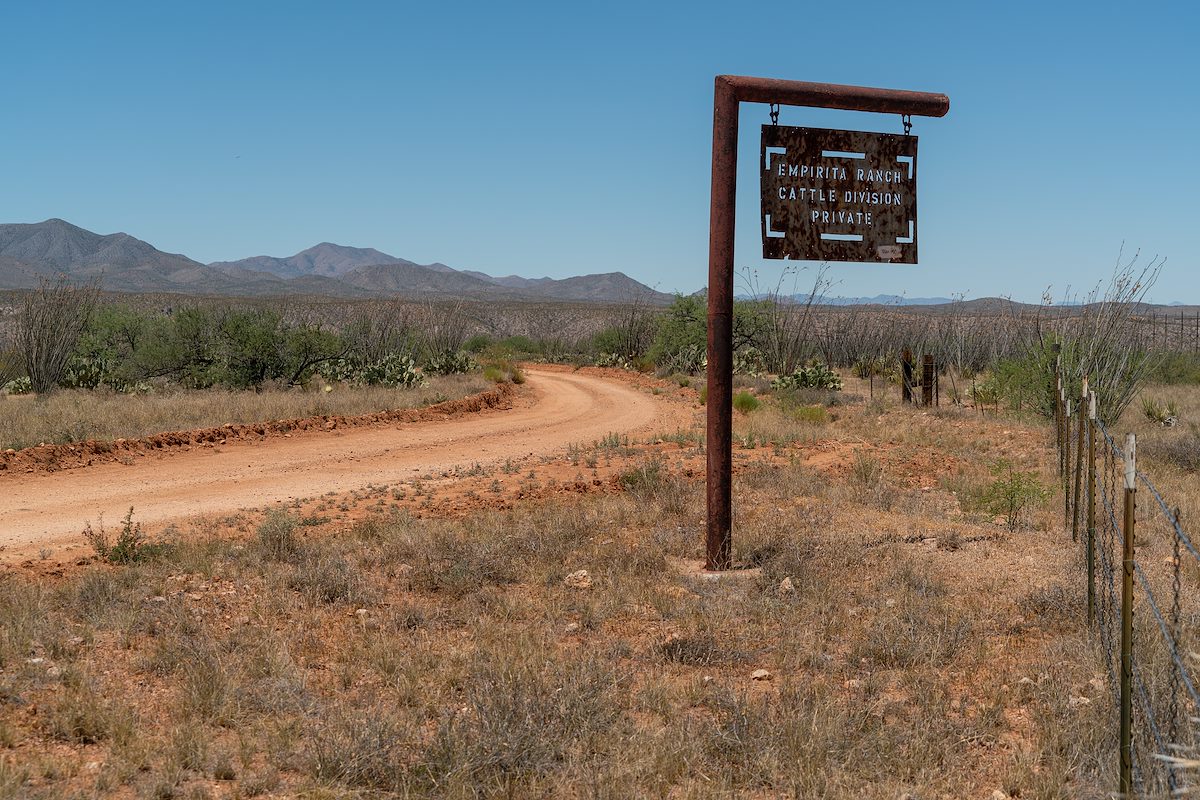
The Empirita Ranch is located south of I-10 and northwest of the Whetstone mountains. It is currently owned by Pima County and is a combination of land purchased from the Empirita and J-Six ranches connected by Arizona State Trust and BLM land. The ranch headquarters - currently off limits to the public (the ranch is still a working cattle ranch) - and surrounding land is part of the Cienega Creek Natural Preserve.
Most visits to the area will cross Pima County property which requires obtaining a permit in advance. There are not any established hiking trails on the ranch but there are some high-clearance and 4WD roads thru the area that are an interesting start to exploring the landscape.
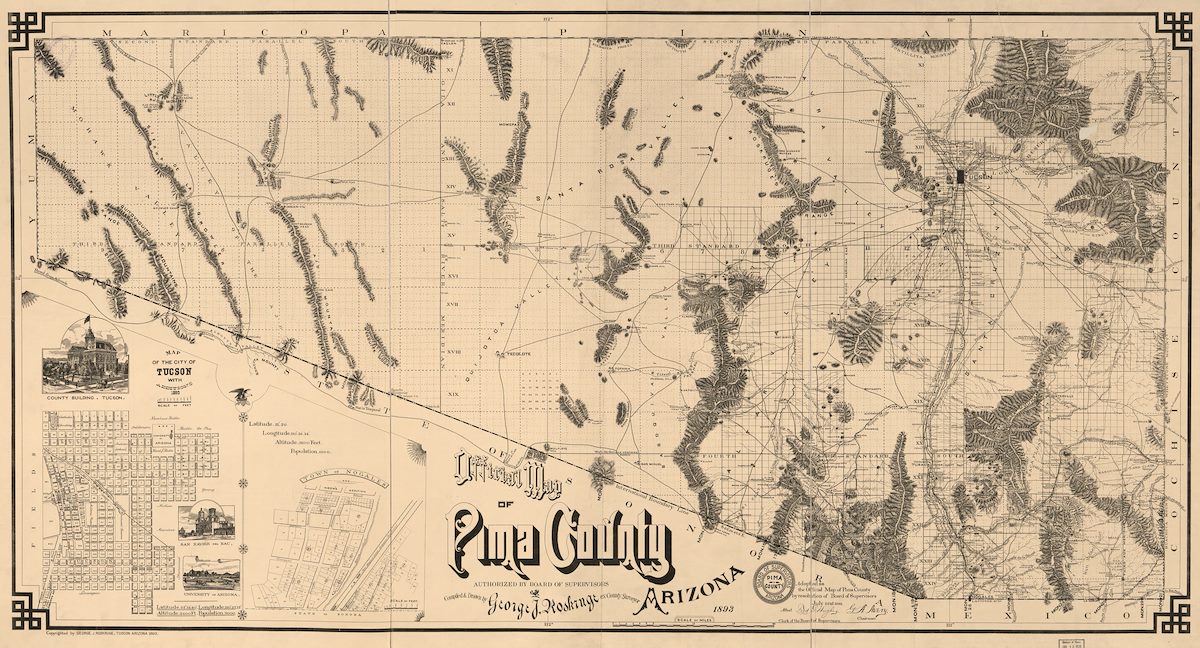
A close look at the far right side of the 1893 Roskruge Map of Pima County shows the names of two of the early Euro-American residents of the area - Kane and Wakefield.
The earliest known Euro-American occupants of what is today the Empirita Ranch Headquarters were the Kane family. They settled in the area in the 1870s and the first version of one of the buildings at the ranch headquarters may have been built by the Kane's. The Empirita Ranch Historic District National Register of Historic Places Registration Form contains more details about the buildings and history of the Ranch Headquarters.
An excerpt from a short biography of Lyman Wakefield in the 1901 Portrait and Biographical Record of Arizona:
The early life of Mr. Wakefield was on the uneventful order, and was devoted to a mastery of the details of farming and to acquiring the education of the public schools. When twenty two years of age he started out to face alone the conditions in a new and strange part of the country, and in Tucson started in the cattle business. In 1878 he removed to Pantano, Pima county, forty miles east of Tucson, and started a general merchandise business, and was also interested in mining, conducting his affairs in partnership with his brother William. He was also made postmaster of the place, and was the first to hold the position. Upon removing to the Whetstone mountains, Pima county, where he established a fine ranch, which was plentifully supplied with water, and had a fine corral, the Indians were very numerous and troublesome, and some of the surrounding neighbors were killed by the treacherous and ever alert Apaches. When they were surrounded by special danger he traveled at night to the railroad, and carried his wife and babies to the safety of the town.
The present ranch of Mr. Wakefield is situated twenty-five miles west of Tucson, and is given over almost entirely to the cattle industry. To this branch of work Mr. Wakefield brings a wide range of knowledge, and is one of the best informed men in the county. His cattle are fattened from the seeds of flowers and on Indian wheat, and he finds that as an article of diet they are quite as satisfactory as the usual feed of corn. He is one of the most successful cattle men in the county, and is otherwise widely interested in the affairs of the locality. He is a member of and was formerly director in the Arizona Stockmen's Association. A Republican in politics, he is an ex-member of the territorial committee on organization, and in 1898 was nominated county sheriff of what is now Pima and Santa Cruz counties, and elected by a majority of one hundred and fifty, the term of office extending from January, 1899, until January, 1901.
Today Lyman's sister Maria (1845-1909) is probably the most well known member of the Wakefield family. Maria is noted as "first professionally trained public school teacher in Arizona" and taught in Tucson in late 1873 until her marriage to Edward Nye Fish in 1874. In 1876 Edward Nye Fish sold property homesteaded by Lyman's bother William Wakefield to Walter Vail and Herbert Hislop - this property was the start of Empire Ranch.

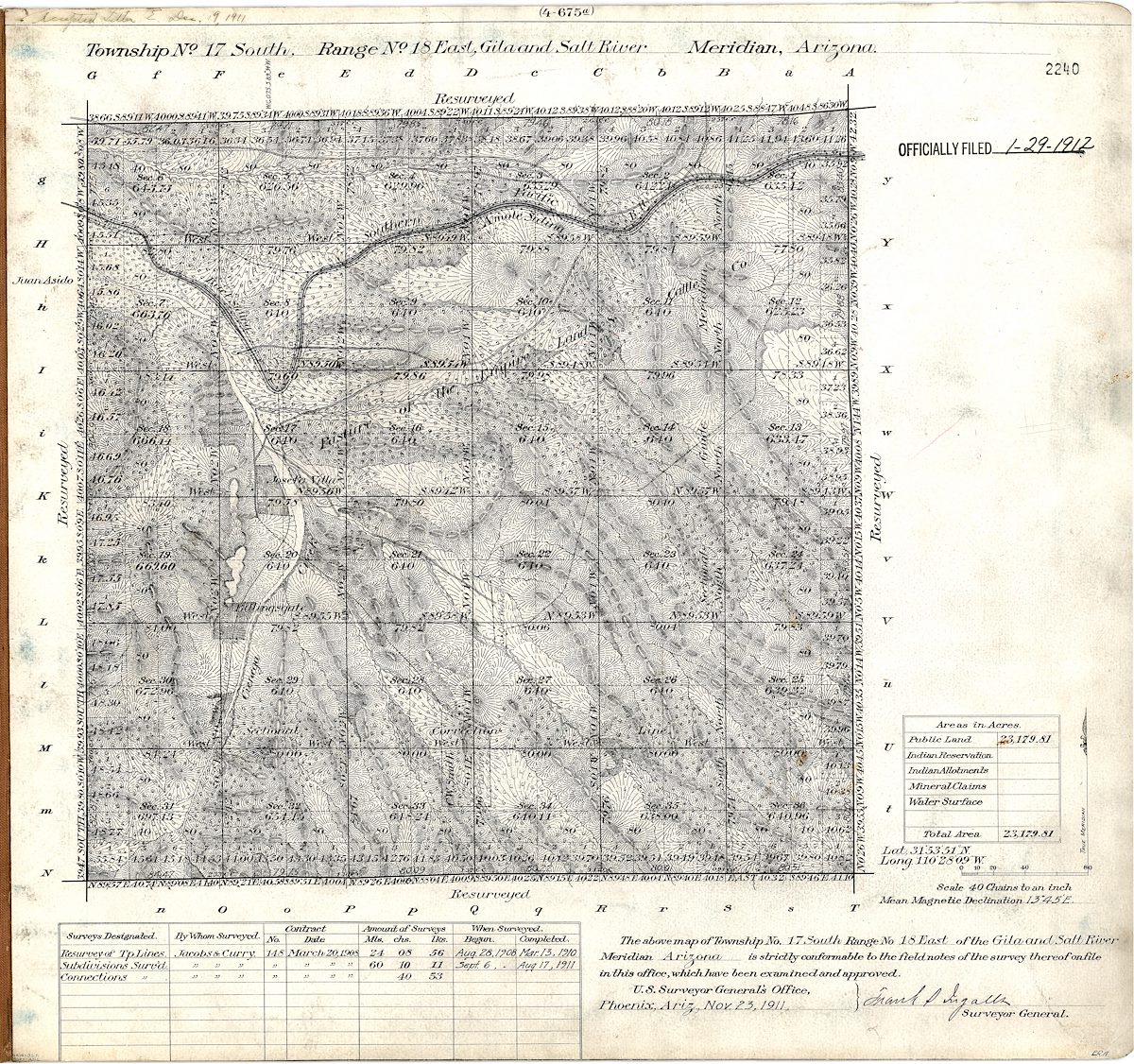
By 1911, when the General Land Office survey of the area was approved, the Kane Family appears to have left the area and the only indication of the Wakefield Ranch is the notation 'Old Wakefield House'. Several names appear on the map and in patent documents including:
- Josefa Villa: Josepha and Jose Villa lived in an area that is the current ranch headquarters. Their land was patented on 11/21/1912 and was acquired sometime before 1930 by the Empire Ranch.
- Billingsgate: The name is noted with fields and a house along Cienega Creek but the name Billingsgate does not appear in any GLO records for the area.
- C.W. Smith: Pasture and buildings patented 1913 including what is marked on current USGS maps as 'Smitty Spring'. Today this is Arizona State Trust Land.
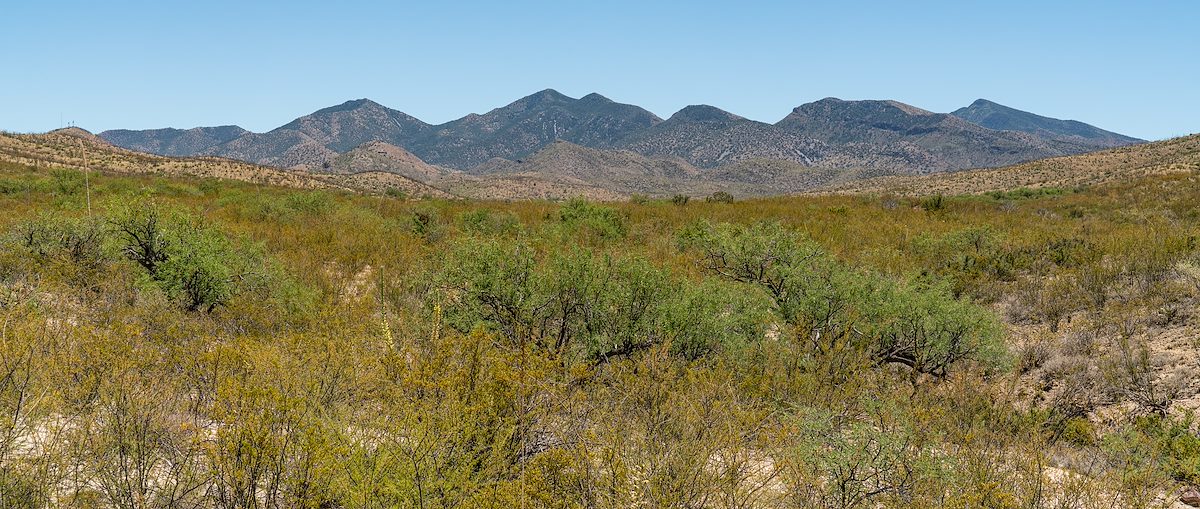
Stretching across two thirds of the survey are the words 'Pasture of the Empire Land & Cattle Co.' - the prominence of the mark foreshadows the future with the Empire Ranch absorbing other operations in this area until 1941 when financial challenges forced a split into northern - the Empirita - and southern sections.
The northern portion was initially sold to a truck dealer named D.W. Ingram, sold in 1943 to Wallace and Merry Fleming, in 1954 to Roy and Crystal Siemund, in 1968 (after the tragic death of Crystal Siemund - Stories from the 1967 jet crash - tucson.com) to Maurice and Ann Ohrel (who also purchased the adjacent J-Six Ranch) and finally to Pima County in 1992. Pima County added 2,700 acres to the eastern portion of the ranch in 2009 from the J-Six Ranch.
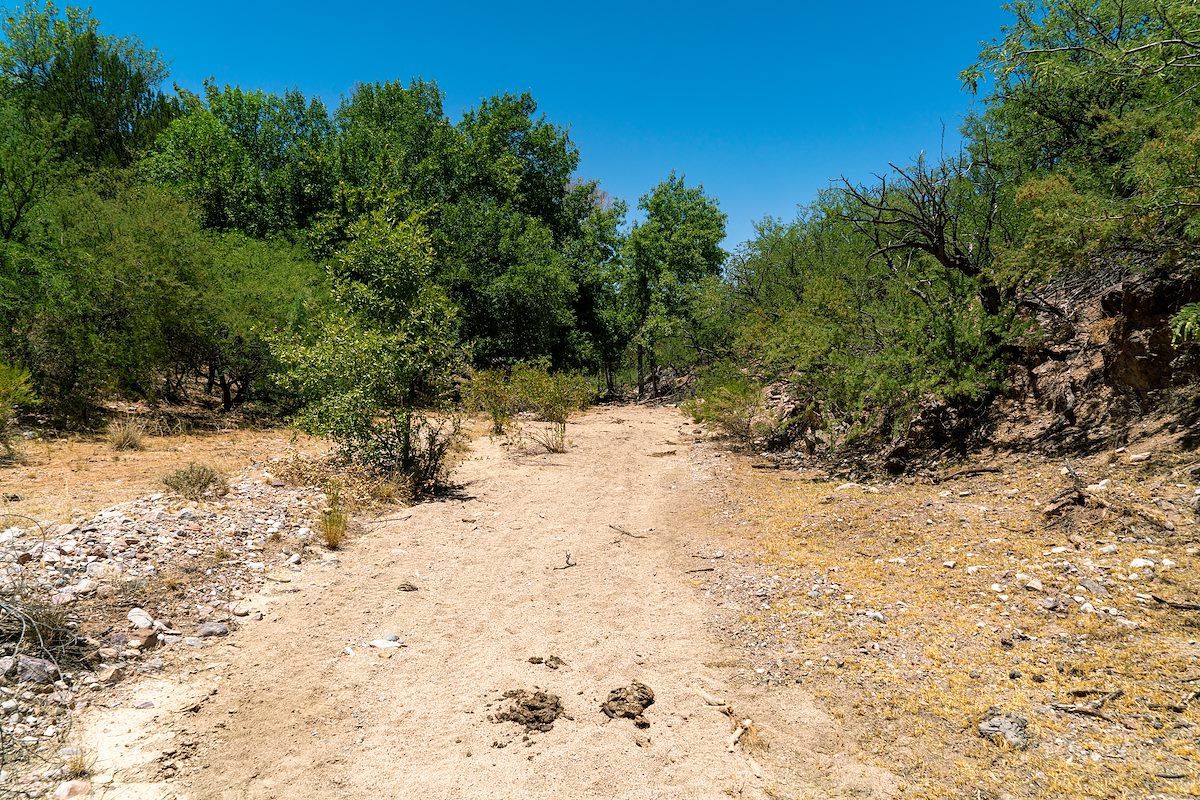
We drove thru the Empirita Ranch on a hot summer day - past the headquarters, out to Wakefield Spring, up onto an Ocotillo filled hillside and back thru rolling hills. The only person we saw all day gave us a friendly wave from their Equine Dentistry truck as they left the ranch - solitude with a dose of distant sound from I-10. Under the blazing sun we made briefs stops, photo strolls, and enjoyed the landscape before driving back to Tucson.



